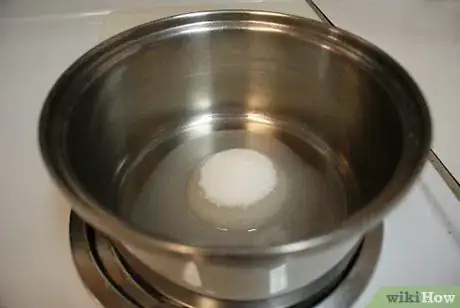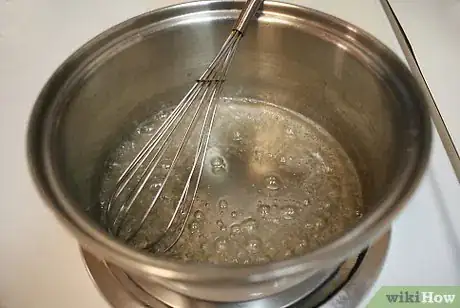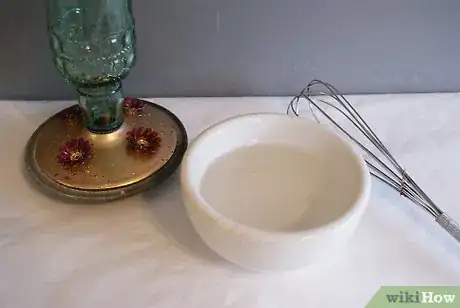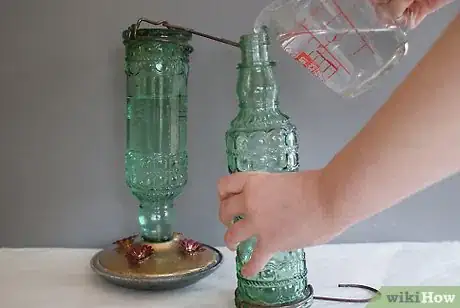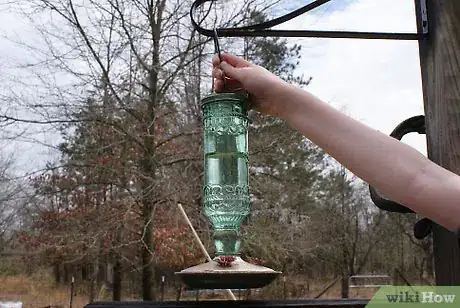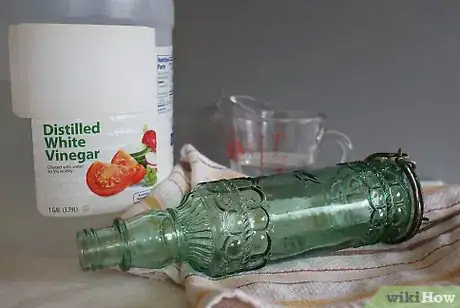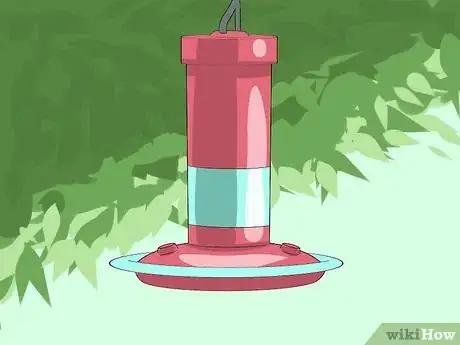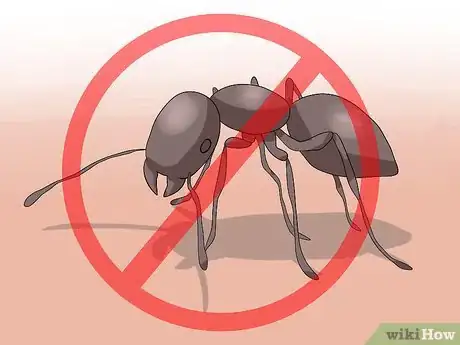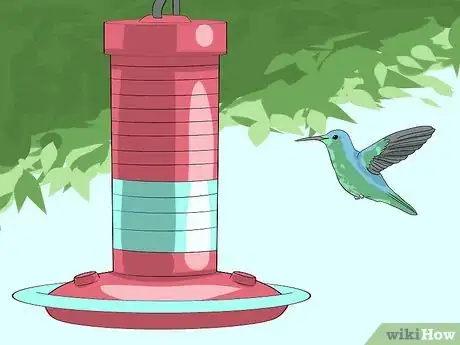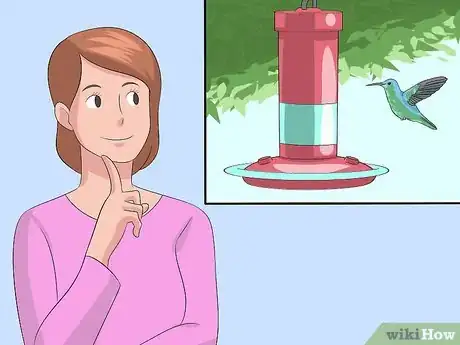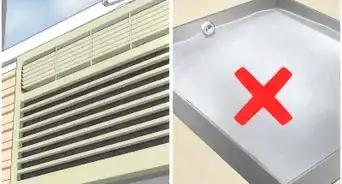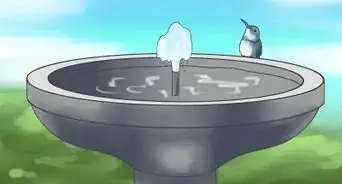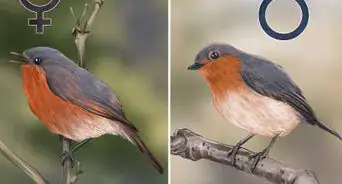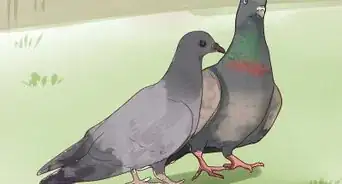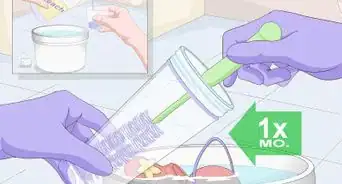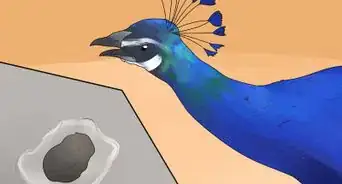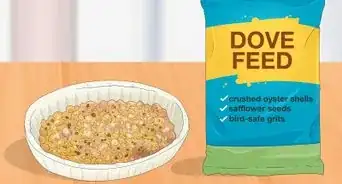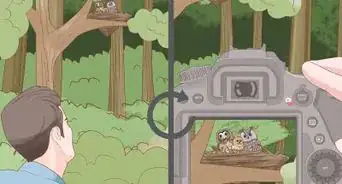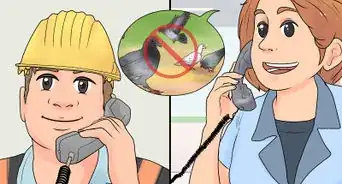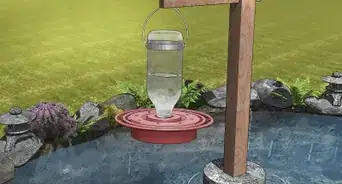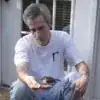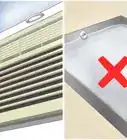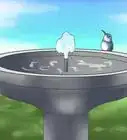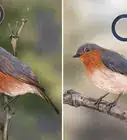This article was co-authored by Jeff Jones. Jeff Jones is a Bird Specialist based in Nashville, Tennessee. He is the writer of BirdOculars, a website dedicated to helping people become better birders. He has over 18 years of experience and specializes in feeding birds and wildlife. Jeff experiments to find ways to encourage birds he wants to study and his website help others to do the same.
wikiHow marks an article as reader-approved once it receives enough positive feedback. This article has 54 testimonials from our readers, earning it our reader-approved status.
This article has been viewed 669,568 times.
Hummingbird nectar is so cheap and simple to make, there's no reason you should go the store-bought route. A little sugar and water is all you need; no need for the red food coloring – it can harm these fast flyers. In just a few minutes, you'll have a meal ready to hang outside your window.
Steps
Making the Nectar
-
1Mix together white sugar and water using 1 part sugar to 4 parts water. Only you know how much you should make – take into consideration the size of your feeder and how quickly the birds go through it – it can only store for so long.[1] Here's a simple chart to make the math easier:
- 1 cup sugar to 4 cups water
- 3/4 cup sugar to 3 cups water
- 1/2 cup sugar to 2 cups water
-
2Mix the sugar and water together.[2] Bring the mixture to a boil and then turn the heat off, stirring all the while. The sugar should dissolve entirely into clear sugar water. And don't keep it boiling – that changes the water to sugar ratio through evaporation.
- Don't use a sugar substitute – your hummingbirds do not need to go on a diet. They burn so much energy every day fluttering their wings at breakneck speeds that sugar is necessary. So only use plain, white sugar – not brown, not a sugar substitute, and definitely not gelatin.
Advertisement -
3Allow the sugar solution to cool. Cover the pan and allow the solution to reach room temperature. If you put it into your feeder warm or hot, the sugar may crystallize.[3]
Filling, Changing, and Cleaning Your Feeder
-
1Fill your hummingbird feeder and keep the rest in storage. Most experts suggest only filling it about halfway full – sure, it means more work on your part, but then it's less likely the nectar will get a chance to mold. However, if you have so many hummingbirds you can barely keep up, go ahead and fill it all the way up.
- Take a clean, empty 2-liter bottle to hold the rest of the nectar and keep it in the refrigerator. It will keep for around a week as long as you keep it in a cold, dry location.
-
2Change the hummingbird nectar every few days. Do this more often if you notice mold growth or fermentation. Generally speaking, nectar deterioration will be controlled by the outside temperature. Here's a brief rundown of how it works:
- Temperature: 71-75°F (23-25°C); change every 6 days
- Temperature: 76-80°F (25-27°C); change every 5 days
- Temperature: 81-84°F (27-29°C); change every 4 days
- Temperature: 85-88°F (29-31°C); change every 3 days
- Temperature: 89-92°F (31-33°C); change every 2 days
- Temperature: 93°F+ (33°C+); change daily
-
3Clean the hummingbird feeder using a vinegar and hot water. Do this every time before you add new hummingbird nectar to the feeder.[4] Old nectar will mold, resulting in white strings and sometimes even black, moldy spots, so be sure to get rid of the mold regularly.
- Sometimes you can get away with only washing it with hot water, if you take it apart and are diligent. However, only do this if no mold whatsoever is present. Most feeders come apart easily just for this reason.
- If you do use vinegar, make sure the vinegar odor is gone before you replace the nectar. Flush any vinegar residue with a hot water rinse.
Troubleshooting Your Feeder
-
1Place your feeder in the shade. This will keep the temperature down and extend the life of your nectar. You don't want your nectar to start getting milky and develop black spots in the blink of an eye, so keep it in the shade. It's heat and sunlight that make it go bad, by encouraging bacterial growth. Make sure it's out of the way of cats, too.[5]
- A good location might be near your window where you can watch the hummingbirds come and go as they feed. Don't worry about the hummingbirds being shy. They may start out unsure of your feeder (just the way we're leery of any new food source), but soon enough they'll come to trust your homemade treat. And you being in the window isn't a threat – they could out-fly you any day of the week and they know it.
-
2Keep ants away from the nectar. Ants love sugar water and hummingbirds do not love ants. They will not drink from a feeder with active ants on it or dead ants floating in the nectar. You can keep them away with an ant guard (some feeders come with ant guards already installed).
- Some people put petroleum jelly around the ridges of the feeder or use an insect barrier like Tree Tanglefoot. The latter can potentially contaminate the nectar and Tree Tanglefoot not only kills ants, but can be dangerous for hummers, too. If you go either of these routes, be very, very careful.
-
3Place a red ribbon around your feeder if hummingbirds aren't coming. Hummingbirds are attracted to the color red – likely because its their favorite color or is a vibrant color. If hummingbirds can't seem to find your feeder, put a splash of red on it. It'll attract their eye, piquing their curiosity.
- It doesn't have to be a ribbon – red tape, paint, or even red nail polish will work. Just make sure it doesn't contaminate the nectar and can handle external weather conditions, whatever changes you make.
-
4Learn more about attracting hummingbirds to your yard. Though hummingbirds are quite territorial, they put on such a show they're often worth it. People have been trying to attract hummers to their yards for centuries and it's just about down to an art. Here's a few other things you can do to up your hummingbird quotient:
- Place a mister in your garden as well. Hummingbirds love to take a quick "shower" after eating.
- Place several feeders all over your yard. Sometimes alpha hummingbirds will scare smaller birds away.
- Place your feeder next to vibrantly colored flowers. It'll then be hard for the hummers to miss your delectable sugar water.
Community Q&A
-
QuestionCan the feeder being in a sunny spot cause the sugar to crystalize?
 Community AnswerNo. This could cause mold to occur and contaminate the water however, which could harm or kill the birds if they drink it.
Community AnswerNo. This could cause mold to occur and contaminate the water however, which could harm or kill the birds if they drink it. -
QuestionWhy do ants like the sugar water?
 Community AnswerAnts like sugar water because it is a source of food for them. Their tiny bodies get full easily, and a few drops of that sugar water could fill them.
Community AnswerAnts like sugar water because it is a source of food for them. Their tiny bodies get full easily, and a few drops of that sugar water could fill them. -
QuestionCan I put red food coloring in the water?
 Community AnswerNot only is there no need to do this, it is bad for the birds and can harm them; it could possibly kill them in some cases. iI you really want to have red nectar, go the store bought route, but if you want a red color to attract the fast fliers, just get a red feeder.
Community AnswerNot only is there no need to do this, it is bad for the birds and can harm them; it could possibly kill them in some cases. iI you really want to have red nectar, go the store bought route, but if you want a red color to attract the fast fliers, just get a red feeder.
Warnings
- Don't wash the feeder in the dishwasher or use harsh detergents or soaps. Even a little soap residue can harm them.⧼thumbs_response⧽
Things You'll Need
- Sugar
- Water
- Saucepan
- Spoon or whisk
- Hummingbird feeder
- Vinegar (for cleaning)
- Bottle scrubber
References
- ↑ https://www.audubon.org/news/how-make-hummingbird-nectar
- ↑ https://www.audubon.org/news/how-make-hummingbird-nectar
- ↑ https://nationalzoo.si.edu/migratory-birds/hummingbird-nectar-recipe
- ↑ https://www.hummingbird-guide.com/hummingbird-nectar-recipe.html
- ↑ http://www.gardening-for-wildlife.com/hummingbird-feeder-placement.html
About This Article
To make hummingbird nectar, first add 4 cups (950 milliliters) of water to a pot. Then, bring the water to a boil. Add 1 cup (225 grams) of granulated sugar to the boiling water, and stir until it’s completely dissolved. Finally, remove the nectar from the heat and let it cool before adding it to your feeder. If you want to make a bigger batch, just use more water and sugar at a 4 to 1 ratio. Store extra hummingbird nectar in your fridge until you’re ready to use it. For tips on how to keep ants away from the nectar in your hummingbird feeder, read on!
